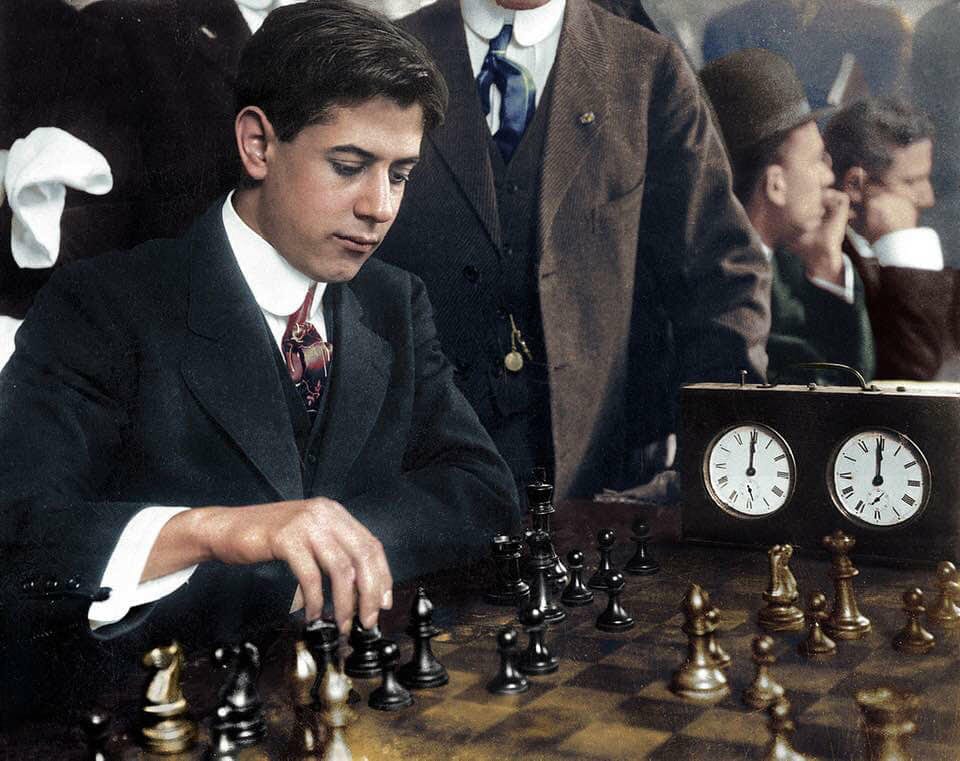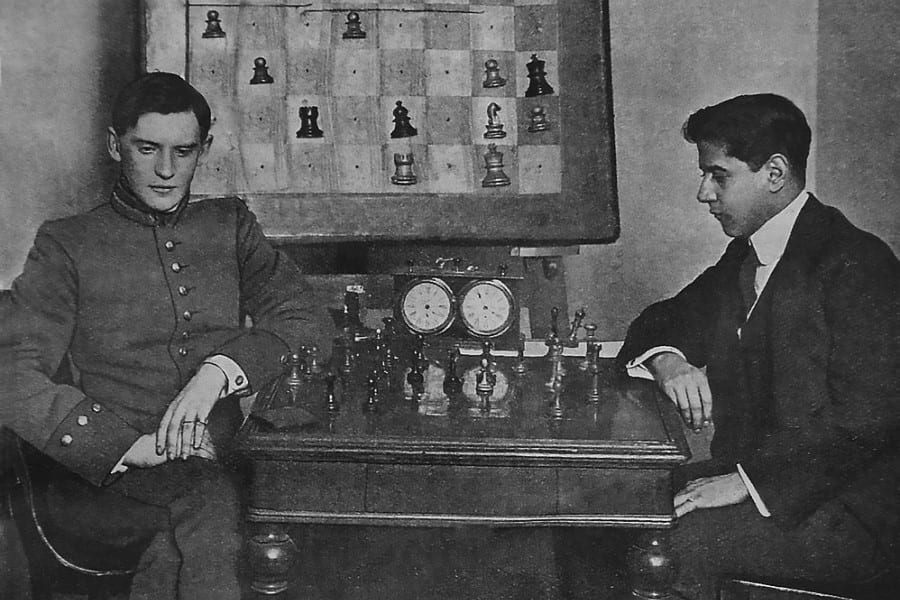Jose Raul Capablanca, a Cuban chess player, was world chess champion from 1921 to 1927. A chess prodigy, he is widely renowned for his exceptional endgame skill and speed of play.
Family and personal life

Jose Raul Capablanca was born to the Capablanca couple in Havana, Cuba, in November 1888. He was the 2nd surviving son of his parent. His father’s name was José María Capablanca, who was a Spanish army officer, and his mother Matilde María Graupera y Marín was a Spanish lady from Catalonia.
Recognition as a child prodigy
As Capablanca said, no one especially tough him playing chess. Whatever he learned, merely watching his father play with friends at the age of four. First, his talent recognized when he pointed out his father’s illegal move during the game and then beat his father at a very young age. At eight, he moved to the Havana Chess Club, but couldn’t frequently play due to his doctor’s advice.
In 1901 he played with Cuban Chess champion Juan Corzo; in this match, he narrowly beat the chess champion, Juan. He entered the Manhattan Chess Club in 1905, where his performance termed as extraordinary, and recognized as the club’s strongest player.
As the reputed player of Chase’s world

With time, his talent grew even more, and he became a star chess player. He started playing in simultaneous exhibitions, which increased his reputation in the world. The main reason for becoming famous in the world was a U.S-wide tour in 1909. After the events, he played 602 games in 27 cities and scored 96.4%, much higher than the other player on his time. Seeing his performance, he got sponsorship to an exhibition match with the US champion Marshall.
He became the world’s third most vital player for most of the time from 1909 to 1912. Capablanca participated in New York State Championship in 1910, won six matches and one draw.
Journey of world chess championship
Lasker and Capablanca signed an agreement letter in January 1920 to play a World Championship match in 1921 because Capablanca did not have time to play this match in 1920. Later due to the delay in the game, Lasker announced that if he resigned the world champion’s title, then Capablanca should hold this title. On 27 June 1920, Lasker resigned the crown to Capablanca and said, “Capablanca have earned the title not by the formality of a challenge, but by his brilliant mastery.”
Death
It was on On 7 March 1942 when Jose Raul Capablanca took his last breath. As evident from the complete autopsy that carried on later, it was due to the destroyed right thalamus, and in its place was a hematoma 2 inches wide and 2 inches high. The reason given to all the stress he carried out for his chess positioning and because his ex-wife and children had started court proceedings against him.
Also read: Jacob Barnett, from diagnosed autistic to an IQ higher than Einstein
A content developer with a keen interest in writing | Feel free to contact me at team@139.84.133.140.

